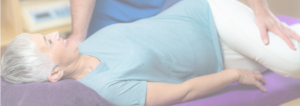
Scoliosis is an abnormal side-to-side curvature in the spine. About 2-3% of the population under age 20 and as much as 60% of those over age 65 have scoliosis (about 6-9 million young people and 29 million elderly in the US alone). Most have never even heard of scoliosis until they’ve been diagnosed. The typical medical approach of “wait and see” in children with scoliosis curves between 10° and 25° or “there’s nothing you can do” for those who’ve finished growing, has left many searching the web for “physical therapy for scoliosis”.
Though scoliosis may be an unfamiliar term to most, physical therapy is relatively common. Most people have used some form of PT at one point in their lives which is why most patients seek PT services to try to get some relief. But most physical therapists are poorly equipped to successfully treat scoliosis. They can only offer exercises and approaches that give temporary pain relief. They cannot slow or stop curve progression, reduce the curve size or teach patients how to control any pain that comes from their scoliosis. Also, many physical therapists treat a wide list of problems besides scoliosis. In other words, unless they choose to limit their practice to the treatment of scoliosis, they never develop the experience or knowledge to successfully treat such a complex condition.
Standard physical therapy is not able to treat scoliosis on its own, but there are many scoliosis specific exercise systems (or schools) that can. Just as it is important to understand your new diagnosis, it’s important to learn about all the treatment options available to you.

Physiotherapy Scoliosis Specific Exercises (PSSE) vs Physical Therapy
The International Society on Scoliosis Orthopaedic and Rehabilitation Treatment (SOSORT) supports observing the patient (or what is known as “Watch & Wait”), Physiotherapy Scoliosis Specific Exercises (PSSE) and scoliosis bracing as acceptable therapy options for treating scoliosis. These physical therapy options are recommended for both childhood (idiopathic) scoliosis AND adult (degenerative) scoliosis. The standard features of these therapies must include:
- 3-D self-correction
- Training in normal daily activities
- Stabilizing the corrected posture
- Adjusting the spinal joints to improve position and restore motion
PSSE is part of a scoliosis care model that includes:
- scoliosis education
- custom scoliosis exercises and physical therapies
- observation of the patient
- psychological support and intervention
- scoliosis bracing
- scoliosis surgery
Scoliosis exercises are not considered an alternative to bracing or surgery. They are a natural therapy that can be used alone or in combination with bracing or surgery as needed. In fact, the latest scoliosis research shows that bracing should never be used without a scoliosis specific exercise therapy program.
Exercise-Based Physical Therapy Scoliosis Treatments
BSPTS (The Barcelona Scoliosis Physical Therapy School)
This treatment method is an offshoot of the Schroth Method. Treatment includes patient education, psychological support, and is often used with bracing and when necessary surgery.
CBP (Chiropractic BioPhysics)
This treatment system consists of exercise, spinal traction and spinal adjustments. It is based on the principle of ‘mirror image spinal distortions”.
CLEAR Method
CLEAR is one of the most prominent exercise-based treatment methods. It uses a three step process: 1) Mix: “unlocking” the spinal curvature from its original position, 2) Fix: using corrective exercises, whole body vibration and spinal adjustments to encourage the scoliosis back to a more normal position, and 3) Set:locking in the straighter spinal position by retraining the brain.
Dobomed
This is another offshoot of the Schroth Method. It involves exercises that stabilize the scoliosis and focuses on restoring the normal front to back shape of the spine.
FITS (Functional Individual Therapy of Scoliosis)
The FITS method is not widely accepted. The main techniques of FITS include postural awareness, myofascial release, training on how to walk, muscle strengthening, side shift, and breathing exercises.
Methode Lyonaise
This method is also not widely acceptance… outside France. It is physical therapy for scoliosis that uses scoliosis specific exercises, spinal mobilization, and teaches patients how to sit in a corrected posture.
The Schroth Method
This scoliosis treatment system is designed to reshape the rib cage and derotate the spine using isometric and breathing exercises. Its goal is to halt progression of the curve, and in some cases reverse the curve.
The effectiveness of Schroth has been demonstrated in research papers, but other research has shown it is difficult to use at home.
SEAS (Scientific Exercises Approach to Scoliosis)
SEAS use individually designed exercises to stabilize scoliosis. Patients are trained on “Active Self Correction” or how to unbend and derotate their scoliosis in front of a mirror . This method works well combined with the CLEAR protocols to stabilize the correction achieved during the CLEAR treatment.
Side Shift
Side Shift has not received wide acceptance outside the UK. Physiotherapeutic treatment built upon the idea that a flexible curve can be stabilized with sideways movements. It also includes breathing exercises to expand the chest cavity.
Vojta
This method has also not received wide acceptance. Very few treatment centers offer Vojta. It involves stimulating specific points on the body within blocked networks of nerves between the patient’s brain and spinal cord. The idea is to create “reflex-like” movements described as “freeing a switch” or “new networking”.
Read more about exercise-based scoliosis treatments >>>
Benefits of Scoliosis Physiotherapy
Stop scoliosis curves from getting worse during the secondary period of progression (more than a year after passing peak growth).
- In non-progressive scoliosis, significantly reduce the size of the curve.
- Improve posture with 3D self-correction and hold the corrected posture.
- Improve secondary muscle imbalance and related pain.
- In more severe cases of thoracic (upper back) scoliosis, it can also improve breathing function.
It is recommended that the scoliosis physical therapist work as part of a multidisciplinary team including the orthopedic doctor, the orthotist, and the mental health care provider.
Strauss Scoliosis Correction Approach to Scoliosis Physiotherapy
The best scoliosis exercise programs use the best parts from various methods. Strauss Scoliosis Correction uses elements from CLEAR, Schroth, SEAS, CBP, and Yoga for Scoliosis accompanied by highly specific chiropractic manipulation and nutritional advice. Doing so provides us with more tools to build each program to the patient’s unique needs, and deliver the best results.
Our Scoliosis Specific Exercises programs are built from 6 components:
- Targeted stretching to reduce tension on the spinal cord and mobilize the stiff areas of the scoliosis.
- Modified yoga exercises to improve mobility, reduce the twist of the spine and strengthen the core.
- Active Self Correction to strengthen the muscles around the scoliosis and stabilize the curvature They are performed as part of everyday activities like standing and sitting.
- Brain re-training of the posture system and improving the scoliosis in a subconscious way.
- Breathing instruction to improve lung capacity
- Activities of Daily Living instruction on sitting, standing, sleeping, carrying a purse or backpack, and fitness exercising.
It is essential to begin scoliosis specific exercises as soon as possible. Introducing scoliosis exercises early can help you or your child stop progression and prevent the need for bracing and surgery. If you have already had surgery, but still experience pain from your scoliosis, this approach offers you skills to help manage your condition.
When curves approach 30 degrees or more, increased rotation and twisting begins in the spine. This makes the spine curve more and increases the chances of visible deformity. If left untreated, the scoliosis curve can surpass 45 degrees, which is when orthopedists begin recommending surgery.
Contact us today for more information
on exercises that stop and correct curve progression.
+1 (845) 624-0010
 Stop scoliosis curves from getting worse during the secondary period of progression (more than a year after passing peak growth).
Stop scoliosis curves from getting worse during the secondary period of progression (more than a year after passing peak growth).